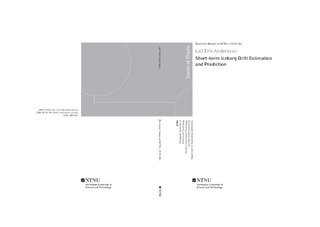| dc.description.abstract | Short-term iceberg drift forecast is part of the Ice Management framework, which is a key component of the International Standard, ISO 19906 specifying requirements and guidance for the design, construction, transportation, installation and decommissioning of offshore platforms. Ice Management was developed and successfully applied to support operations in ice-infested waters, such as the oil and gas operations on the East Coast of Canada and the Barents Sea. If an iceberg approaches a platform, it must be deflected from its path. Physical iceberg management is an expensive and time-consuming operation. An accurate iceberg drift forecast reduces the amount of unnecessary towing actions. Consequently, it reduces the threat of iceberg interactions and risk of downtime and possible disconnection of oil and gas operations. Moreover, it simplifies the decision-making of platform operators.
A mechanistic dynamic iceberg model was previously developed in the 1980’s. An operational iceberg drift model was developed at the National Research Council of Canada and implemented at the Canadian Ice Service and other agencies. However, significant uncertainties, especially in the ocean current forecast, along with the parametrisation of the model, prevent an accurate forecast. Furthermore, frequent iceberg position measurements, which may be available when the iceberg approaches an offshore facility, are not included in the conventional forecasts with the dynamic iceberg drift model. Consequently, important and available information is not considered in these drift forecasts.
A common method for platform operators to forecast an iceberg trajectory is to extrapolate the last two iceberg position measurements linearly. This thesis discusses different approaches to how frequent iceberg position measurements can be incorporated in the forecast process to improve the operational short-term iceberg drift forecast. The developed algorithms are tested on nine iceberg trajectories from two datasets collected during 2015 and 2016. Moreover, the thesis contains additional work analysing the ocean current based on the observed iceberg trajectory and deriving a Cramér-Rao bound for discrete-time systems with state constraints. Based on the latter, a Kalman filter for linear state equality constraints is developed. | nb_NO |

